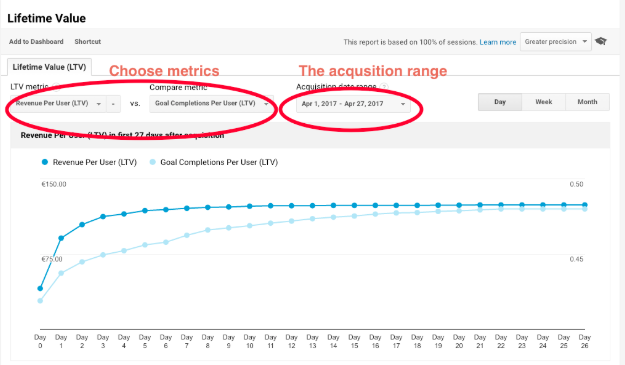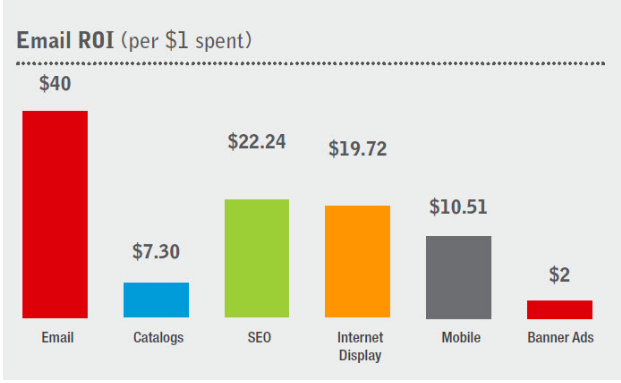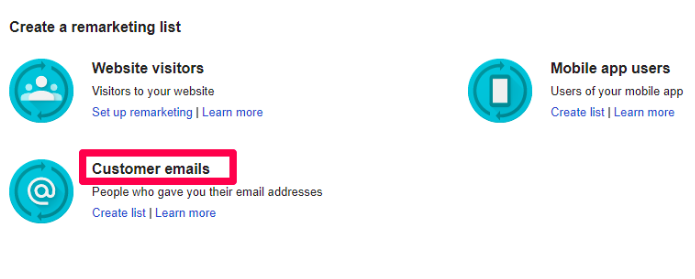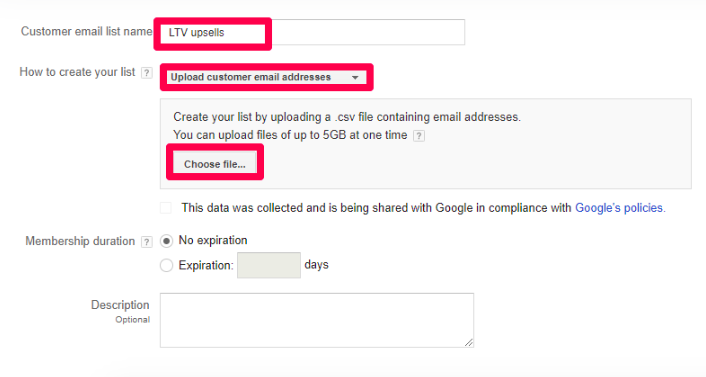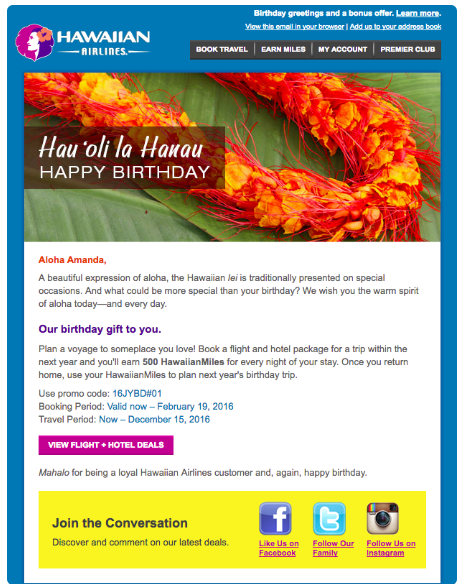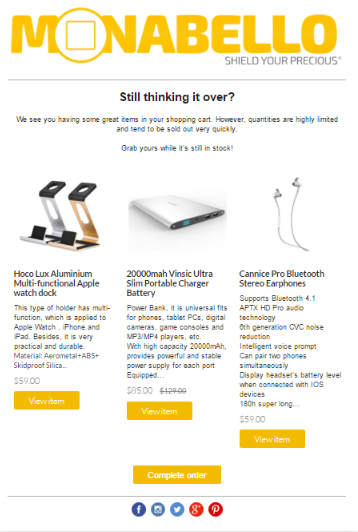Generally speaking, it’s cheaper to retain customers than to keep looking for new ones. Often, brands spend the bulk of their efforts seeking new business instead of making sure older customers are happy with the service.
As exciting as it is to see your traffic on the rise or new customer subscriptions rolling in, you can’t forget about the customers you already have.
To increase sales long term, you’ll need to communicate with customers on a regular basis, engaging them at every stage in the buying cycle. It’s all this exercise in building a brand. This means communicating value at all stages—and delivering on customer expectations for your brand. TL/DR; you’re building trust.
What is Customer Lifetime Value?
Now, before we get started, it’s important to understand why putting a price tag on your customer lifetime value is so vital for your company’s success. According to David Stok, one of the biggest startup killers is the inability to monetize customers after the initial acquisition.
Often, companies spend a lot of time and energy acquiring new customers. For example, you’re spending on ad campaigns or reducing margins by providing free trials and discounts.
Your customer lifetime value is the estimated amount you’ll net from your relationship with a customer. Unfortunately, the value of those relationships may not be easy to quantify. It’s a combination of intangibles like customer service, as well as ad spend and social media efforts.
As you can see below, you’ll need to strike a balance between what you’re paying for marketing, sales, and what you’re doing to ensure consumers come back for seconds, thirds, and so on.
How do you calculate customer lifetime value?
When you calculate customer lifetime value (CLV), there are a few nuances you need to consider. The most straightforward way to explain this is to take the amount of money you earn per each customer and subtract the amount you spent both acquiring their business and serving them.
You can estimate your CLV by doing a quick analysis. Say the value of your average order is $100. Then, anytime someone places an order, let’s say there’s a 10% chance they come back.
Then, say you also spend an average of $20 per customer acquisition. The total spend you can expect for your average customer is divided by one minus the repeat purchase rate, or $100 / ( 1 – 0.1) = $111.11
Subtract your customer acquisition costs from that, and you get a customer lifetime value of $90.11. Now, your numbers might be different, but you can apply the same equation to figure out your CLV.
Additionally, you can do things more easily by using Google Analytics to determine your customer lifetime value.
Tactics for Success
Now that we’ve looked at a handful of ways, you’ll need to figure out a strategy for keeping those customers coming back to you. You’re in luck if someone has signed up for a subscription, as they’ll likely set it and forget it.
Making that initial sale isn’t enough. Sometimes, customers need a little extra hand-holding to get the full experience of your product or service. A few tips for engaging with your customers:
Email Marketing
Email marketing is one of the best ways to increase customer lifetime value. For one, these people have already engaged with your brand, so you already have their email. Basically, it’s an opportunity to upsell.
According to Smart Insights, email marketing remains one of the strongest ways to ensure a high ROI. For every dollar spent, on average, email generates $40.
Secondly, email campaigns can be used to make consumers feel like they are getting something special. Think birthday discounts or offer first dibs for a new product. It can also be a way to share content with customers between shipments or provide some additional info with your customers re how to use your products.
Retargeting
In addition to email marketing, retargeting can be a great tool for getting customers to come back and convert. Often, people won’t pull the trigger the first time, and you’ll need to remind them why they should buy.
To do this, go to your AdWords dashboard. From there, you’ll want to click on the “Shared library” section.
Then, upload your customer list.
Save this list and start targeting past consumers. For step-by-step instructions, check out this article from Google.
Focus Your Efforts on the Right Audience
If you keep throwing your marketing dollars down the wrong toilet, your ROI will be next to nothing. Instead, have your sales team focus on serving people that best fit your buyer persona profile.
With marketing dollars, allocate your resources to the platforms your users use. Think social media posts, Google PPC, and email marketing.
Finally, make sure you understand what your customers are looking for in a product. Talk to them, survey them about new products, learn how you can improve.
How Are You Doing?
You know this already; excellent customer service is a critical component in customer retention. If communications are weak, you’ll have a difficult time improving your CLV. Why would someone respond to an upsell offer if they don’t like you?
So, make your brand available. Include a variety of contact options like live chat, email, and phone so people can get a hold of you any way they prefer. Respond to social media comments and take care of problems in an efficient manner.
Additionally, if you have the resources, it’s nice to have customer service available outside of the 9-5 schedule. Regular business hours are convenient for very few people, especially if you’re dealing in multiple time zones. Be kind, responsive, and empathetic. As they say, a little honey catches more flies.
Customer Education Efforts
Customers, especially in the case of SaaS products or subscription-based services, often leave when they don’t fully understand the suite of features you offer. There’s the chance that some people don’t know you have the features they were looking for. These folks may switch to another service provider that better showcases their offerings.
With that in mind, make learning a breeze. Include some educational resources on your page. Examples include short email courses that walk new customers through the features. Or, you could create a collection of video tutorials, right there on the site.
Additionally, you may want to dedicate some resources to a hands-on onboarding process, especially if you’re selling software. These customers will ramp up their spending if they see the value in your product/service.
Personalization
Personalized content can be a tremendous asset in building trust with customers. Today, for better or worse, we have access to a ton of data. This makes it easier to offer a tailored customer experience.
Consider personalized offers to specific segments. Examples include sending special offers to people with birthdays in October. Or, you can send exclusive promotions to people who have spent a certain amount of product.
Another way to personalize is by adding dynamic content on your website and in your email marketing. This means customers will see content that is most relevant to them. Think related products based on their purchase history.
Little things like suggesting upgrades at checkout can add up to extra dollars spent over time.
A couple examples of personalization in action:
Make Things Easier on Your Customers
For example, ensure your eCommerce store saves (and secures) passwords, usernames, and shipping details. Customers may drop off if they need to search for a credit card or remember their password. Any steps you remove for them during the purchasing product is bound to increase sales.
And Then, There’s the Re-engagement Stage
So, what happens when past customers become unresponsive to your efforts? How do you get them back? While pestering customers relentlessly is a great way to get yourself blocked, you can’t expect people to become repeat customers without a gentle nudge in the right direction.
While pestering customers relentlessly is a great way to get yourself blocked, you can’t expect people to become repeat customers without a gentle nudge in the right direction. Click To TweetYou can do this by email remarketing. Send a message here and there to customers who haven’t purchased anything for a few months. Offer those who haven’t opened your newsletter in six months a discount if they come back. Again, this can be annoying, if done incorrectly, so use your re-engagement powers sparingly.
Wrapping Up
In the end, it pays to keep connecting with consumers. If customers have purchased products from you in the past, you’ll need to take things like customer loyalty, retention, and good service seriously. And if you don’t, your loyal shoppers will drop like flies.
Be kind, helpful, and don’t be afraid to engage. Sometimes customers need a little nudge to add items to their cart.


